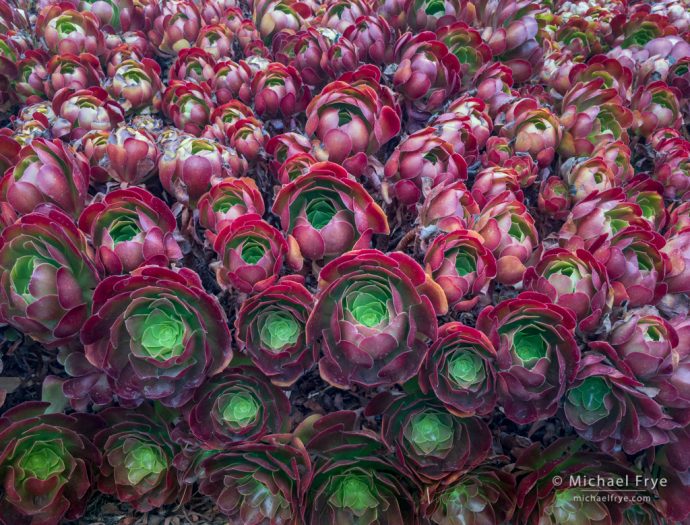
Huntington Gardens – an irresistible pattern! Captured with my iPhone, like all the photos in this post.
I had planned to write this post before the whole coronavirus lockdown. After all, even in “normal” times, many photographers only pick up their cameras when they’re traveling, or taking a workshop. Then when they go on that special trip they’re rusty, and it takes several days just to get back in the groove and start seeing better.
But it doesn’t have to be that way. Here are two simple tips for keeping your photography eye sharp while you’re stuck at home – and even once you go back to your normal routine.
Watch the Light
During the Out of Yosemite conference in February Matt Payne did a live recording of his F-Stop, Collaborate, and Listen podcast. I was one of the panelists, along with Charlotte Gibb, Collen Miniuk, and Alex Noriega. At one point (about 37 minutes in) we were talking about whether we felt compelled to photograph all the time. Alex said that he can go on a hiatus for one to three months, but that even when he’s not photographing he’s still growing, and observing the world around him. He said, “When I’m not in photography mode I still, like most landscape photographers, feel a compulsion to point out anytime there’s good light anywhere, to whoever’s with me.”
That got a laugh from the audience – probably because we’ve all done that too. I, for one, am constantly watching the light and the weather (and yes, pointing out interesting light to whoever is with me). Light catches my eye anywhere and everywhere. I might notice the shadow of a water glass on a table at a restaurant, or late-afternoon sunlight streaming through the windows of my house, or reflections of neon signs in wet pavement at night. You can find beautiful light everywhere, if you keep your eyes open.
You don’t have to photograph this light – just notice it. But then again, we all have highly-capable cameras in our pockets these days. When you notice some interesting light, why not pull out your smartphone and snap a picture? Even better, take a moment to refine the composition, and make the best photo you can. Just looking for light, and photographing it whenever possible, will improve your photography immensely.
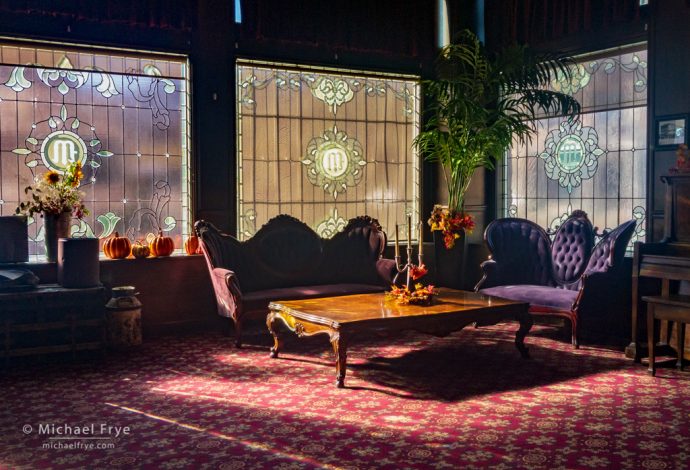
Lobby of the Mitzpah Hotel, Tonopah, Nevada. How could I resist photographing the morning light streaming through the stained-glass windows of this old hotel?
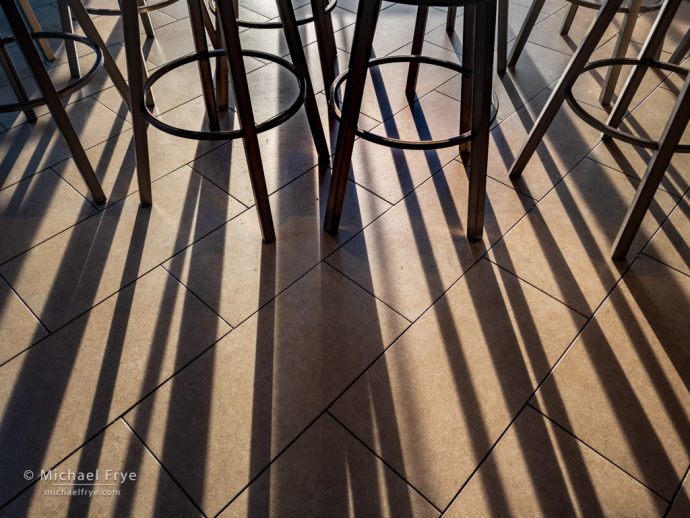
Barstools and shadows at a Rubio’s in Bakersfield, California. Late-afternoon light streaming through large windows created some wonderful shadows on the floor.
Look for Patterns
I think one of the biggest keys to improving your eye for composition is to learn to see abstractly. That means thinking less about the subject, and more about the lines, shapes, tones, and (maybe) colors in front of you, and how those elements might fit together to create a cohesive composition.
One of the best ways to train your eye to see lines and shapes is to look for repeating patterns. What do I mean by a pattern? Any visual element that repeats itself. It could be a series of rectangles, circles, parallel lines, diagonals, or curves – any repeating line or shape, or anything that echoes the lines or shapes of something else.
Do it right now! Get up, walk around your house, or your yard, and find as many different patterns as you can. And while you’re at it, you might as well pull out your smartphone and snap a photo of each pattern. Try to fill the entire frame with the pattern, so it appears as if the patterns extends beyond the frame in every direction.
I do these exercises all the time. I’m constantly snapping photos of random things with my phone, just because the light caught my eye, or I noticed an interesting pattern. (I’ve included a collection of those photos here.) Then, the next time I pick up my big camera, my eye is still finely-tuned, and I’m able to find compositions that I wouldn’t be able to see if were rusty from a month-long layoff.
— Michael Frye
P.S. – A Global, Online Photography Conference
In these interesting times we have to adapt, so Chris Smith and his Out of Chicago team are putting together a huge online global photography conference for the weekend of April 24-26. I’ll be among 60 instructors participating in this event, with three days of live presentations, interactive sessions, panel discussions, tutorials, photo challenges, and group image reviews. For more information visit www.outofchicago.com/live. Hope to “see” some of you there!
Related Posts: The Camera in Your Pocket; Abstract Vision
Michael Frye is a professional photographer specializing in landscapes and nature. He is the author or principal photographer of The Photographer’s Guide to Yosemite, Yosemite Meditations, Yosemite Meditations for Women, Yosemite Meditations for Adventurers, and Digital Landscape Photography: In the Footsteps of Ansel Adams and the Great Masters. He has also written three eBooks: Light & Land: Landscapes in the Digital Darkroom, Exposure for Outdoor Photography, and Landscapes in Lightroom: The Essential Step-by-Step Guide. Michael has written numerous magazine articles on the art and technique of photography, and his images have been published in over thirty countries around the world. Michael has lived either in or near Yosemite National Park since 1983, currently residing just outside the park in Mariposa, California.

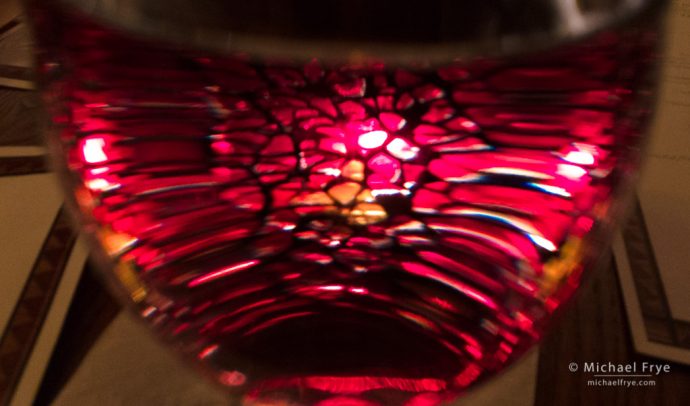
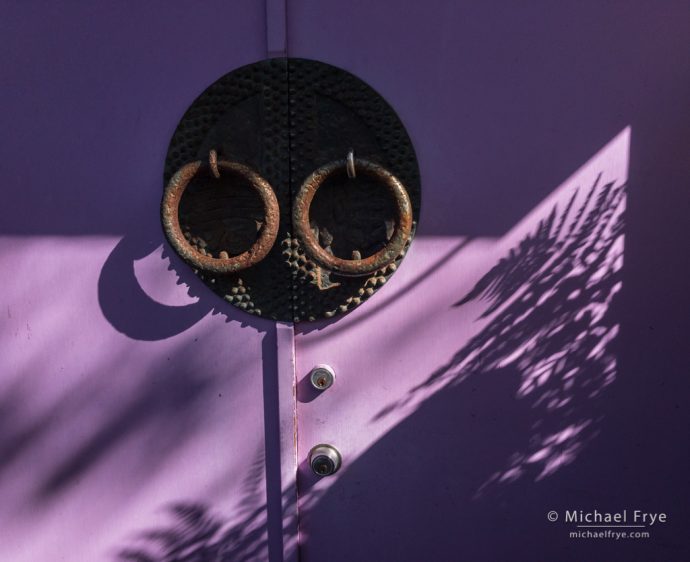
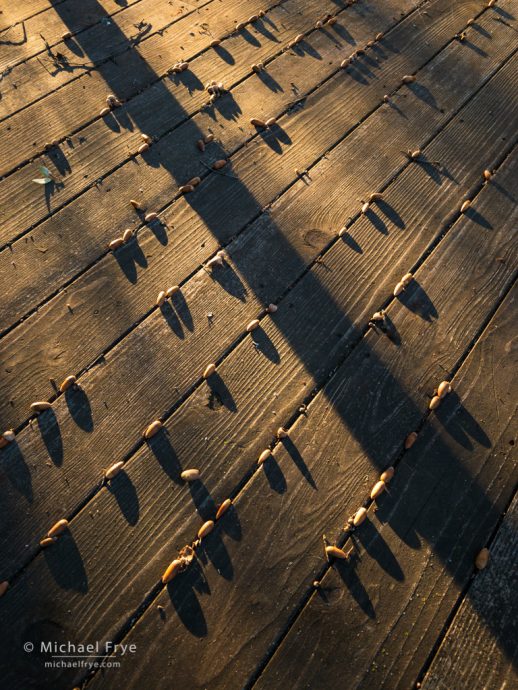
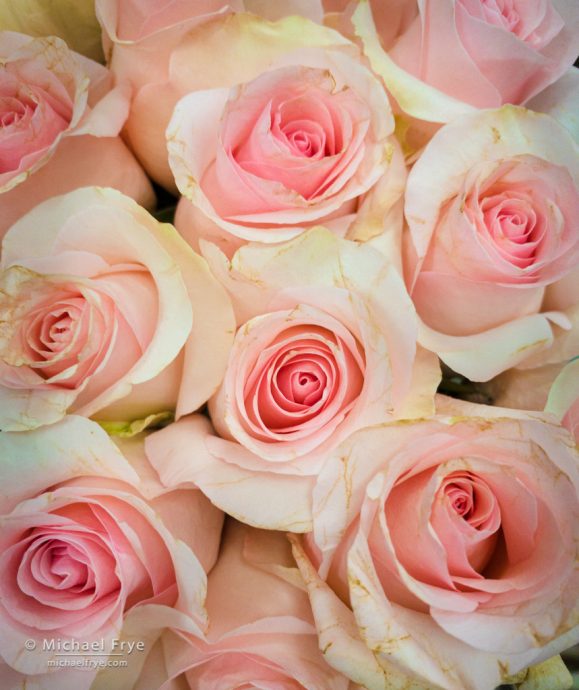
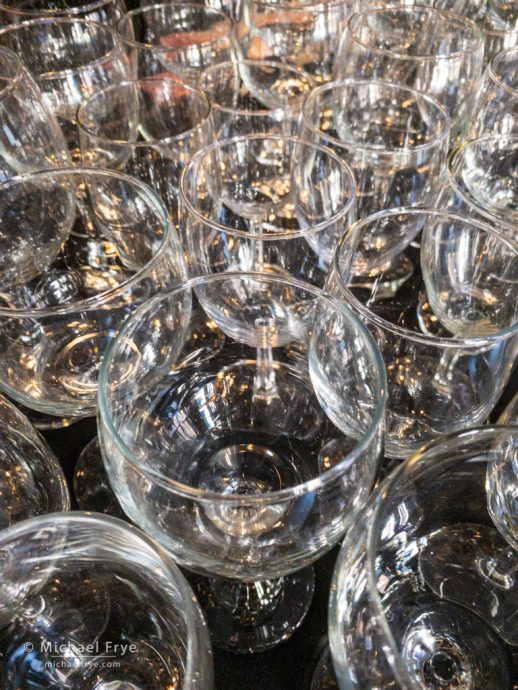
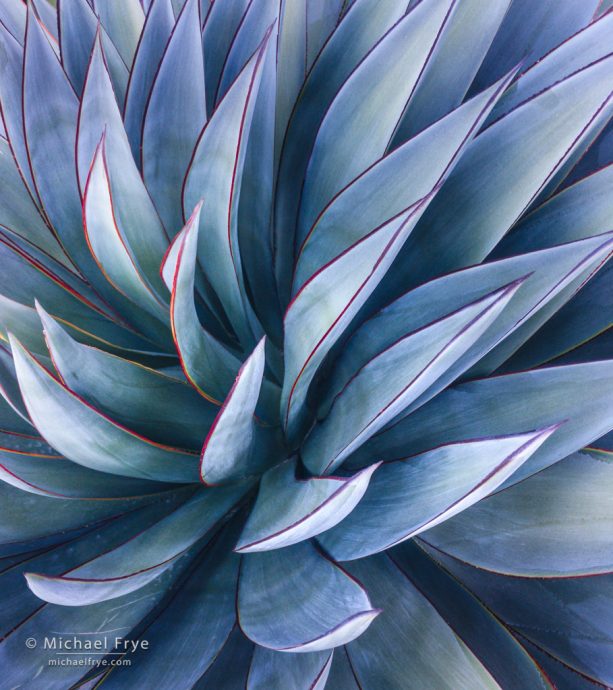








This is such a great article and great reassurance that just because we can’t be out photographing it doesn’t mean we can’t still be learning how to see. I laughed at the part about pointing out great light to people around you as I too do this . Thanks for this perspective and reminder that photography skills can be cultivated even without the camera.
Thanks Matt – and keep honing those skills!
Great article and a good reminder that we can hone our skills without taking an image. I too, had to laugh at “seeing the light” and pointing it out to others. Now I just need to remind myself to use the phone more often. (I’m old so it’s still a phone to me and not a camera!) So thanks for the reminders and I’ll use them in the coming weeks ahead. Stay safe!
Thanks very much Nancy! Phone cameras are great for off-the-cuff photography, and “sketching” while you’re tying to hone in on a composition.
Michael, this article has motivated me to get back to photography again! Thank you so much for inspiring us!
That’s great Adarsh!
Hi Michael,
Great article.
I signed up for out of Chicago live. Looks interesting. Thanks for posting the info.
Thanks Doug, and I’m glad you’ll be joining Out of Chicago Live!
What a great post! I find myself doing the same things – checking out the light, grabbing shots with my phone, etc…. It used to drive my wife crazy but she has gotten used to it. There have been times when we are out with others and I just kind of “zone out” looking at light, patterns, compositions, whatever. I then hear her explaining to the others and it brings me back.
Thanks Joe! Glad to hear that you’re keeping your eye sharp with your phone.